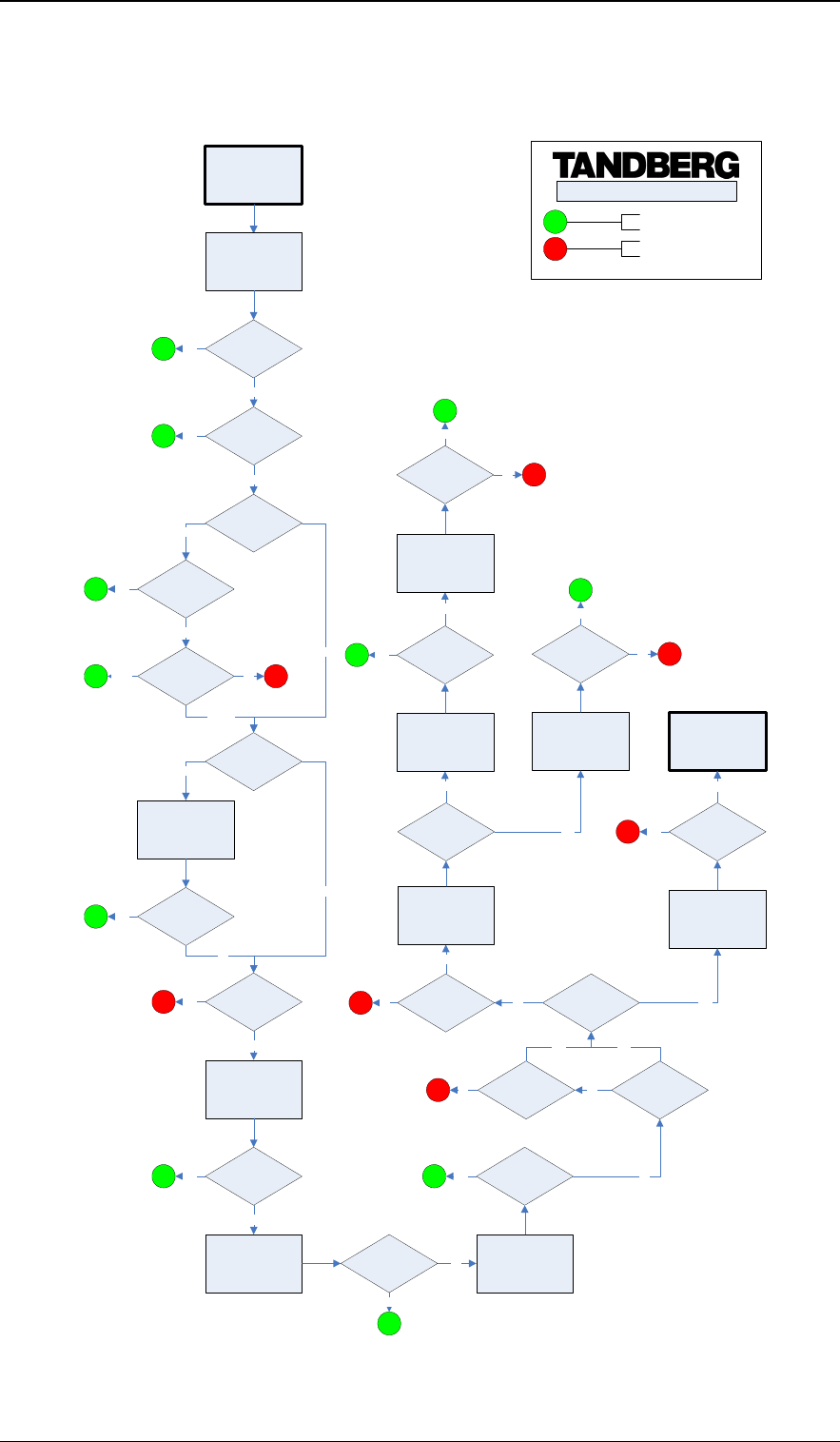
TANDBERG Gatekeeper User Guide
Page 24 of 105
4.8. Call Processing Overview
Figure 6 illustrates the process the Gatekeeper performs when receiving call requests.
Receive Request
from Endpoint
(ARQ) or other
gatekeeper (LRQ)
Locally
registered
endpoint?
Yes
Locally
registered
service?
Yes
No
IP address
literal?
No
On local
network?
Alternates
configured?
Yes
IPAddress
mode?
No
Direct
Off
Yes
Indirect
No
LRQ all Alternates
with hopcount = 1
Yes
No
Received
LCF?
Yes
No
Received LRQ as
a GK and
Forwarding is
Off?
Yes
No
LRQ all alive strong-
matching Neighbour
and Traversal Zones
that match the Alias
Received
LCF?
Yes
LRQ all weak-
matching non-
Traversal Zones
No
Received
LCF?
Yes
LRQ all weak-
matching Traversal
Zones
No
Received
LCF?
Yes No
ARQ from
registered EP
and alias does
not contain local
domain?
LRQ from Known
GK received by
this GK?
NoNo
Does alias
resemble E.164
address?
YesYes
Perform E.164-URI
resolution using
ENUM algorithm
Yes
Empty candidate
set of URIs?
Feed URIs back in
priority order to
Location Search
algorithm
No
DNS Resolution
mode on?
No
Yes
Attempt to locate
foreign gatekeeper
using DNS SRV
Foreign
gatekeeper
located?
No
Call signaling
port located?
Yes
No
Attempt to locate Call
Signaling port using
DNS SRV
LRQ foreign
gatekeeper
Yes
Received
LCF?
No
Yes
No
Yes
Success: return LCF or ACF
Failure: return LRJ or ARJ
Search Algorithm
Attempt to locate Call
Signaling port using
DNS A/AAAA
Found
address(es)?
No
Yes
Apply Transforms
Figure 6: Location decision flow diagram


















